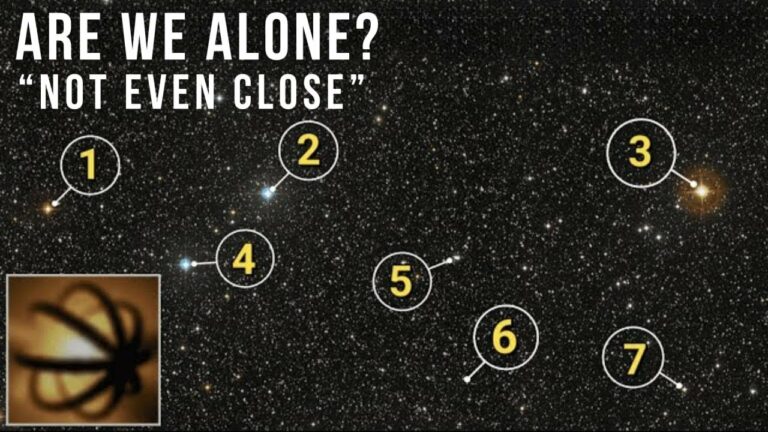We Need to Talk About How Close We Are To Aliens – RIGHT NOW!
Have you ever wondered what it would be like to harness the power of an entire star? Well, buckle up, because we’re about to dive into the mind-bending world of Dyson Spheres, and trust me, things are about to get wild.
Imagine an alien civilization so advanced they built a gigantic structure that completely engulfs their star, capturing almost all of its energy. Sounds like something straight out of a sci-fi blockbuster, right? Back in 1960, a brilliant physicist named Freeman Dyson proposed this cosmic megastructure idea. Since then, it’s been the stuff of both scientific inquiry and late-night sci-fi binges. But what if I told you that we might be on the verge of finding actual evidence of these colossal constructions? That’s right, we’re talking about potential alien technology on a scale that makes our most impressive feats look like sandcastles.
Now, before you start packing your bags for an interstellar road trip, let’s break down what’s got the astronomy world buzzing. A team of skywatching sleuths has identified not one, not two, but seven stars within our cosmic neighborhood—well within 1,000 light-years, which is practically next door in space terms—that are behaving very, very strangely. These aren’t just any stars; they’re M dwarfs, the cosmic equivalent of fun-sized candy bars. They’re glowing with an infrared intensity that’s just unheard of by our standards.
But wait, there’s more! As if seven wasn’t exciting enough, another group of stellar detectives has added 53 more stars to our “that’s weird” list. We’re talking about a total of 60 stars that are lighting up the infrared spectrum like cosmic Christmas trees. And get this: these stars range from little red dwarfs all the way up to stars that could be twins of our sun, scattered across a distance of up to 6,500 light-years.
Now, you might be thinking, “Sure, but what’s the big deal about some extra infrared glow?” Well, my curious friend, that glow could be the smoking gun we’ve been searching for in our quest to find advanced alien civilizations. You see, if a Dyson Sphere were capturing a star’s energy, it would give off waste heat, and that heat would show up as, you guessed it, infrared radiation.
Of course, the scientific community isn’t breaking out the alien welcome banners just yet. These infrared anomalies could have other explanations, like cosmic dust bunnies or other astrophysical phenomena we’re still trying to understand. But that’s what makes this so exciting. We’re standing on the precipice of potentially groundbreaking discoveries, peering into the unknown and asking questions that could reshape our understanding of the universe and our place in it.
Do not forget to share your opinion with us to provide you with the best posts !




0 Comments